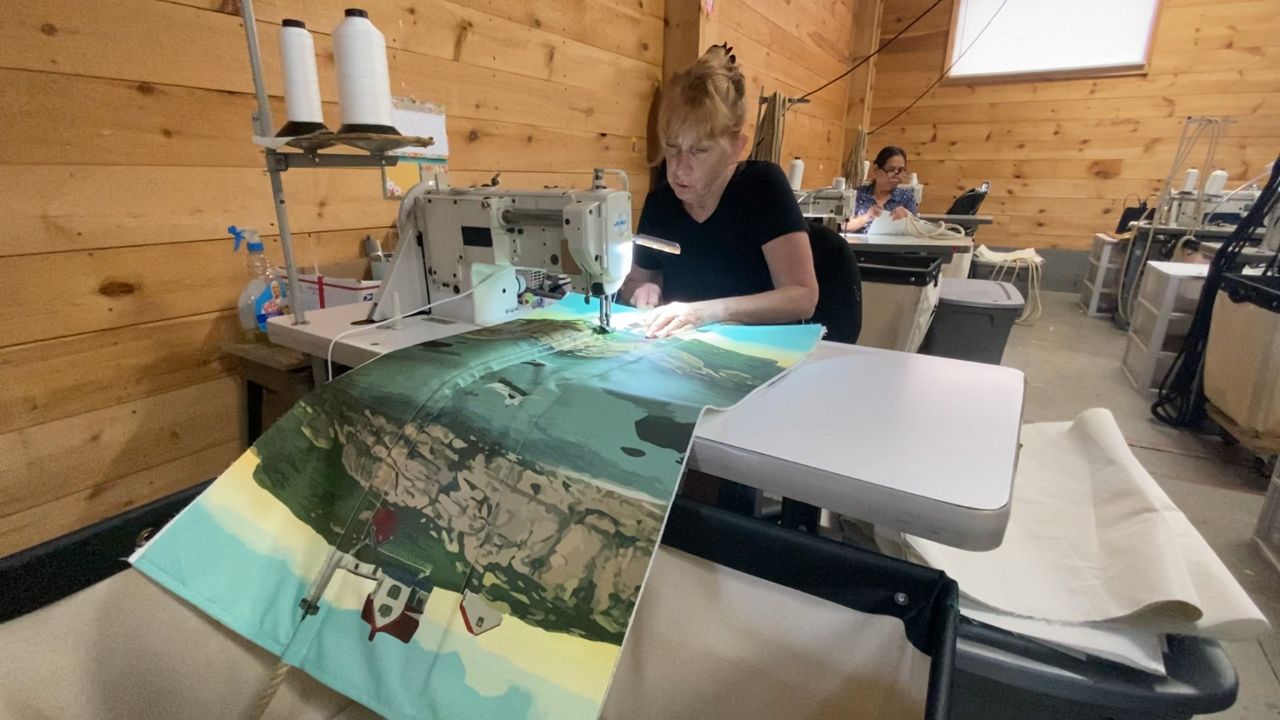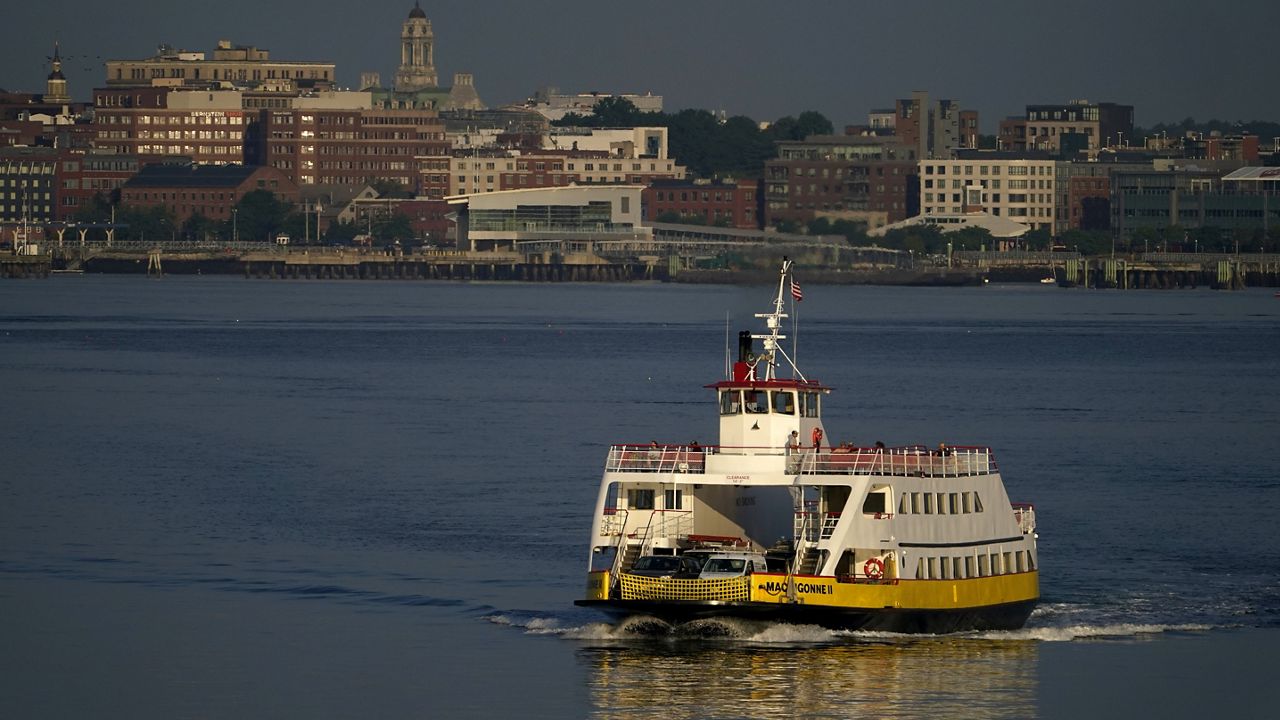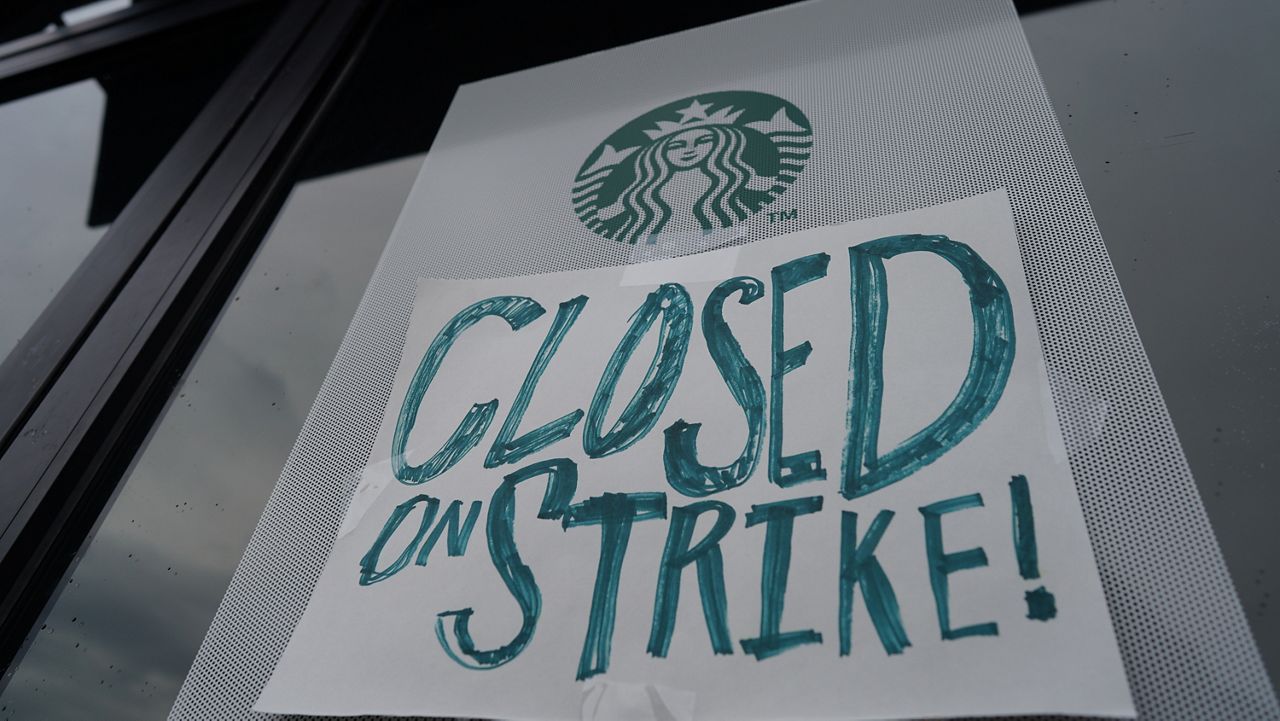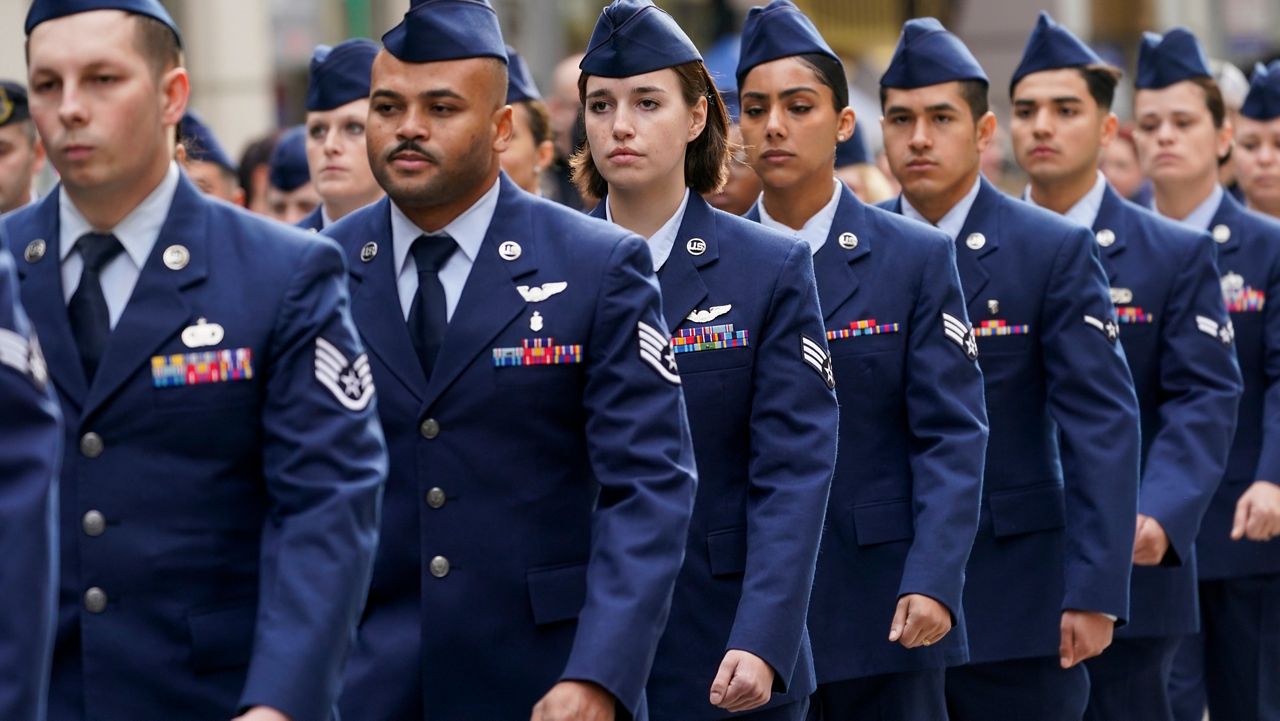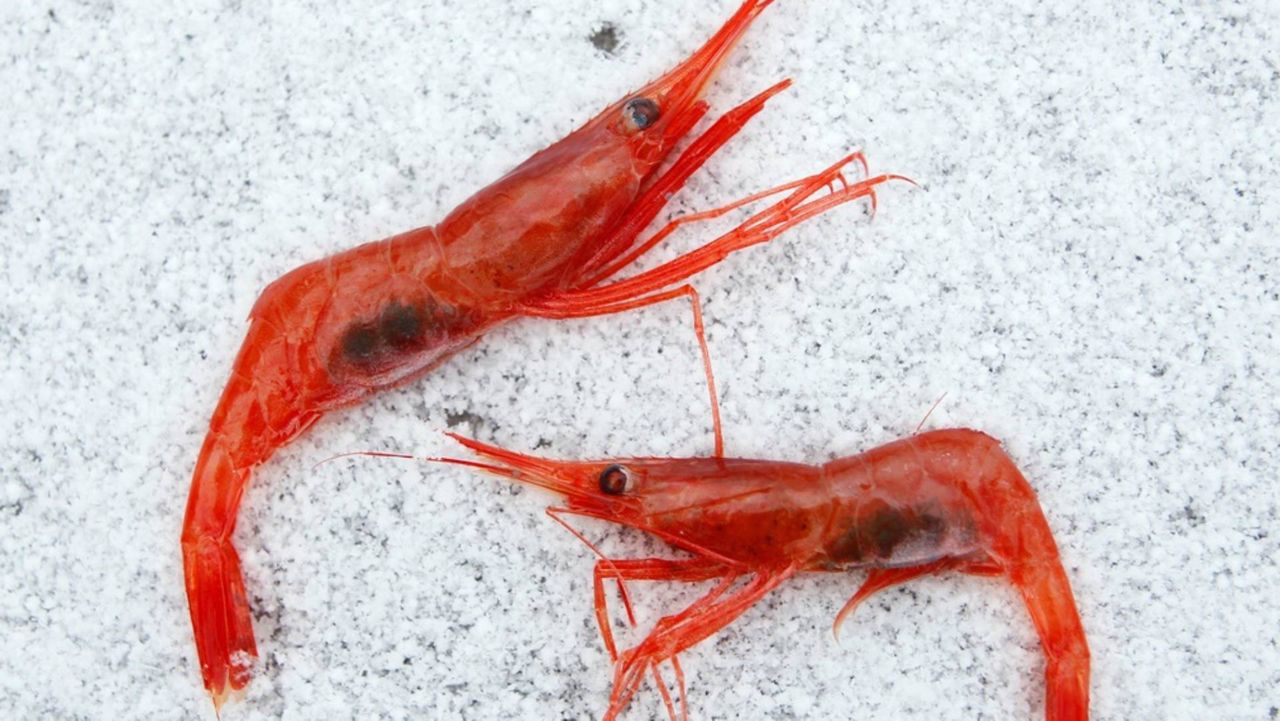Maine tote bag and accessory maker Sea Bags’ most prominent location in Portland is, without a doubt, its 2,300 square-foot flagship store at 123 Commercial St., but that store has only been open since 2020.
Its original location, and current factory store, is a two-minute walk away on the waterfront, down the narrow Custom House Wharf, squeezed in next to its legendary neighbor, the Harbor Fish seafood market.
Its location is a fitting one for Sea Bags to have gotten its start, and not just because of its name. The company, founded by Hannah Kubiak in 1999, takes old sails destined for the trash heap and turns them into cute and durable handmade products, all hearkening back to their nautical roots.
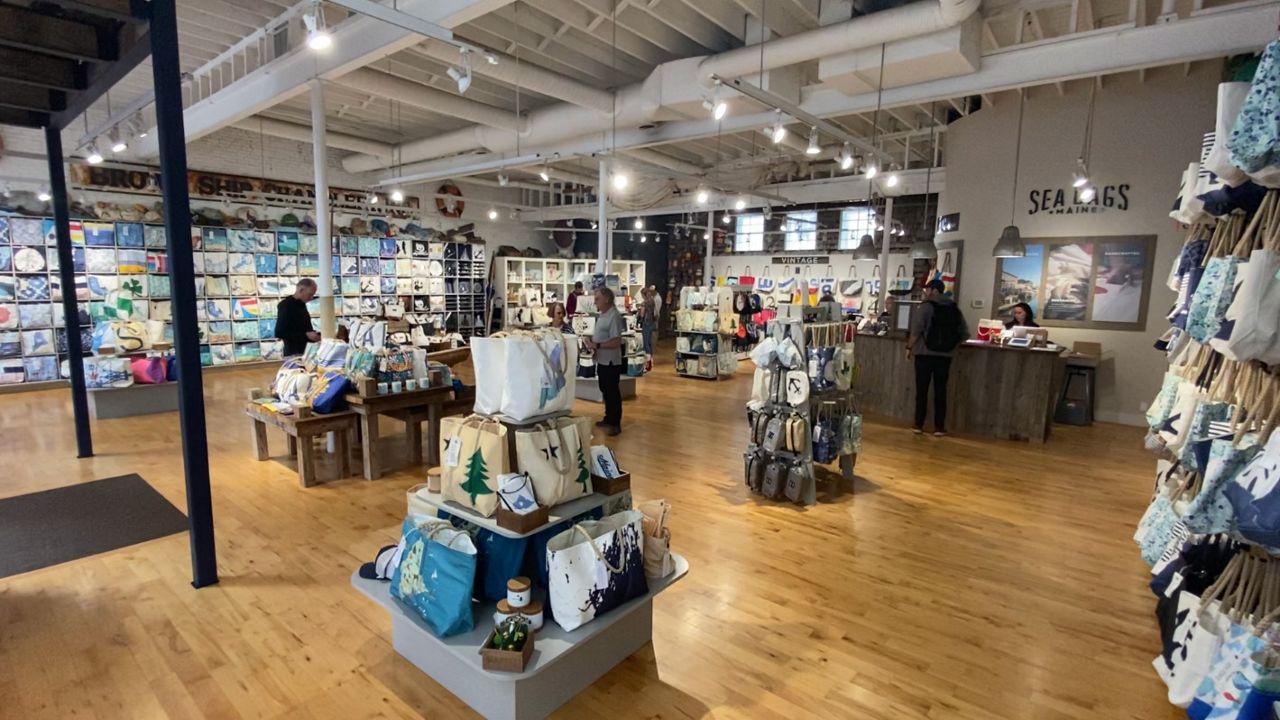
(The Sea Bags flagship store, on Cumberland Street near the Portland waterfront. (Spectrum News/Sean Murphy)
At a glance, the bags represent traditional tote bags, but the hemp rope handles are woven by hand to resemble sail ropes, and the bags themselves bear the stitching and in some cases markings of the original sails. Still others are printed with logos, scenic images and similar designs reminiscent of the Pine Tree State.
“You really aren’t going to have two of the same,” said Katie Wolitarsky, the company’s spokesperson.
Prices range from $50 for small “bucket bags” to $250 for larger totes.
The popularity of Sea Bags’ products is reflected in the company’s exponential expansion, from a single shop more than 20 years ago to 50 stores spread across 15 states today, as far south as Key West, Fla., and as far west as Michigan.
The company also sells its products in other retail stores.
Don Oakes, who has been the company’s CEO for the past 10 years, couldn’t say for sure how many stores Sea Bags contracts with, but said, “We’re in the hundreds.”
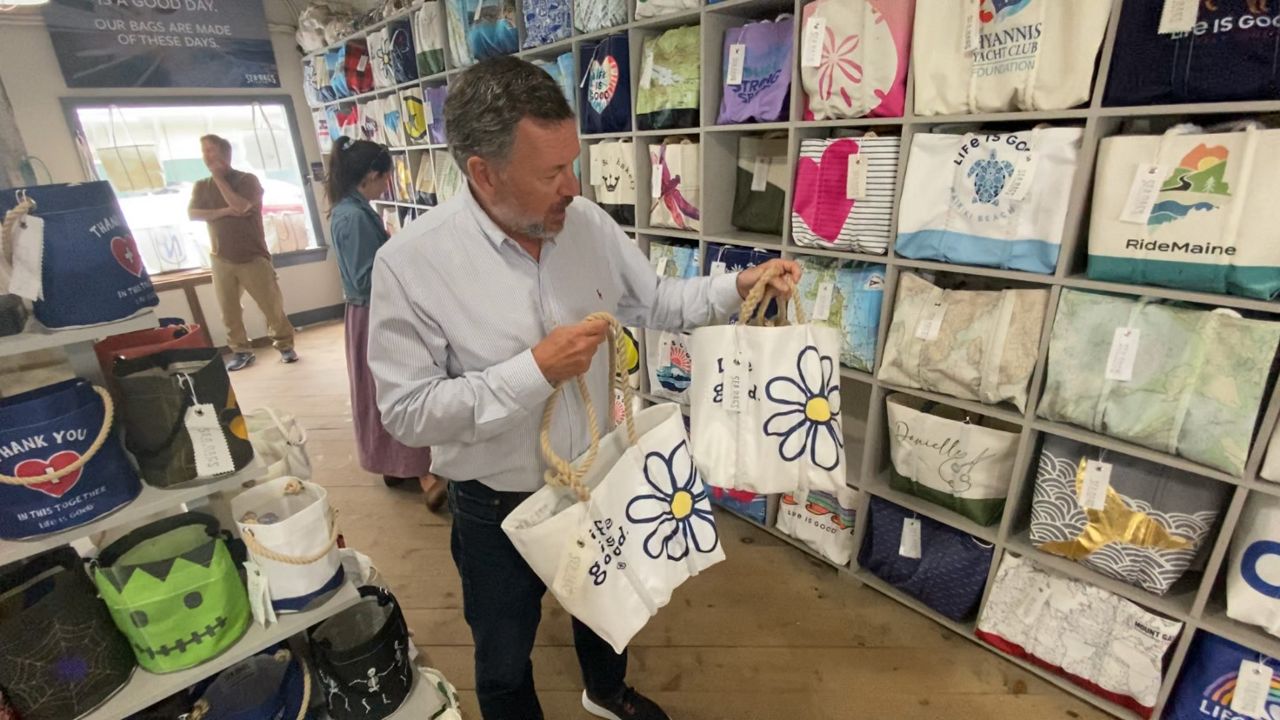
(Don Oakes, CEO of Sea Bags, shows off some of the company's products at its factory store, on Custom House Wharf in Portland. (Spectrum News/Sean Murphy)
Despite more than $20 million in sales every year, Sea Bags is not sitting idle. The company is testing a new store in California right now and plans to add more stores nationwide in the future.
Despite the growth in volume (the company produced 200,000 tote bags and accessories in 2022 alone), Sea Bags proudly displays an almost stubbornly artisanal determination not to cave to industrialized production or outsourcing to keep up with demand. To do so, Oakes said, would ruin what the company has built.
“It’s the authenticity of the brand,” he said.
Oakes insisted that Sea Bags does not automate anything – every item the company sells is made by hand, stitched in one of the company’s two production locations, Portland and a satellite location in South Portland. Some of the company’s employees even assemble products or components at home.
The South Portland location is where used sails – donated by groups as large as yacht clubs and as small as individual boaters – first get processed. The material is officially unfit for boating but perfectly usable for making bags when cut to size and shape. Again, Oakes said, it’s done by hand. The nature of the work makes even designing a machine to cut the sails down impossible.
“The sails are not uniform,” he said. “They’re all different sizes, they’re all different shapes, they’re all different weights.”
The company employs 300 nationwide, including more than 100 in Portland and South Portland.
During a recent visit to the Portland factory location, April McLucas, 42, of Portland, a seven-year veteran of the company, was working in the back as a “kitter.” She puts together squares of sail fabric to be used as a bag’s outer layer, then others to use as an inner layer, along with rope and other pieces to attach.
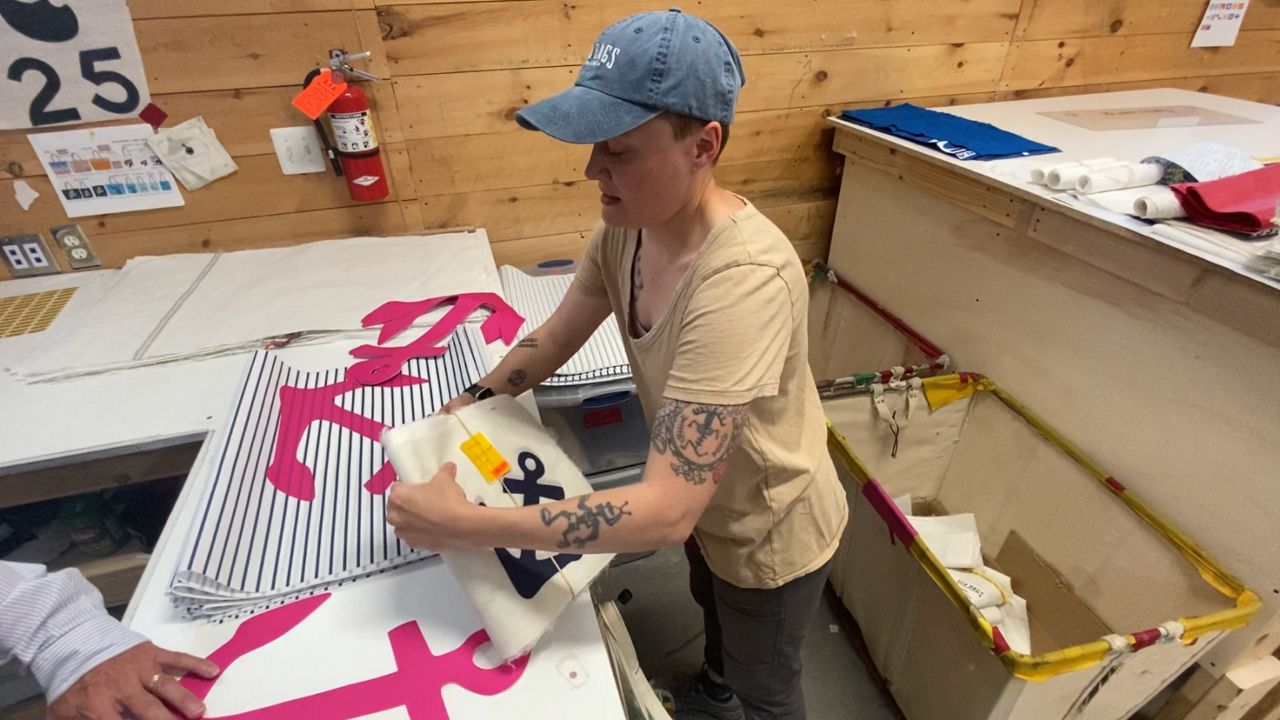
(April McLucas, 42, of Portland, works for Sea Bags in Portland as a "kitter," assembling "kits" of materials, each of which can be used to make a single bag. McLucas said she makes as many as 300 of them a day, but the variety of materials, from recycled sails, ensures the work is never boring. (Spectrum News/Sean Murphy)
Each kit is then used by other employees to assemble a single bag. She can assemble as many as 200-300 kits a day. The nature of using donated material, she said, means every sheet of material, and thus every kit, looks a little different.
“I love the creativity that we get to have here, and I love that we work with recycled material,” she said.
Nearby, Lisa Kronmaier, 67, also of Portland, worked away on an electric sewing machine, assembling a tote bag. She came to the company in 2010, after seeing a local news story about it.
Today, she makes about 30 bags a day. She said she loves sewing and working on quilts at home in her spare time. She also loves the location, and her fellow sewers, whom she refers to as “a little sewing circle.”
“Everyone gets along great here,” she said. “I like being on the waterfront.”
Wolitarsky noted the company is maintaining its commitment to sustainability, right down to not using plastic such as bubble wrap in its products’ packaging.
Used sails are typically discarded as trash, not recycled, and over the past 15 years the company has taken in an estimated 1.5 million pounds of sail material that otherwise would have ended up in a landfill.
Today, Wolitarsky said, the company takes in about 10,000 sails a year. Donors, she said, are thrilled at being able to put the old sails to use.
“It’s unbelievable. They’ve just found this outlet to keep sails from ending up in a landfill,” she said.





